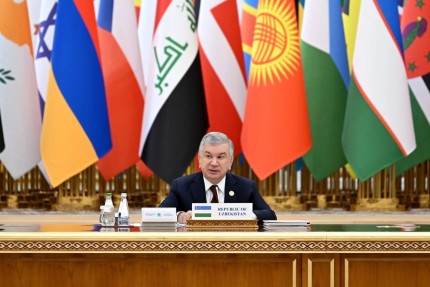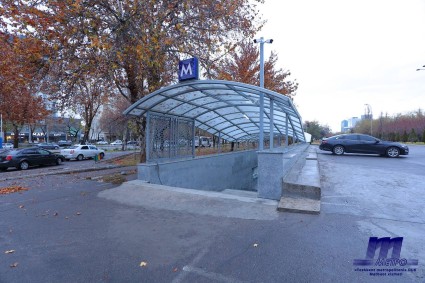The Ministry of Transport responded to the inquiry from the Chairman of the Senate Committee on budget and economic matters, Erkin Gadoev regarding measures to reduce traffic congestion in Tashkent, implement the Intelligent Transport system, and integrate public transport into Greater Tashkent format. The Senate published the response.
As underscored in the response, a conference call government meeting chaired by the President was held on July 9, during which directives were given to prevent congestion and develop public transport. Major efforts are being taken to address these directives, the Ministry of Transport underscored.
Measures to Counter Traffic Congestion
1,004 buses have been purchased for Tashkent city, including 304 electric buses, 500 12-meter buses, and 200 18-meter buses, which has brought the capital's total fleet to 1,847.
The bus route network was overhauled, adding 164 routes of four types: 99 connecting routes, 14 ring routes, 11 main routes, and 40 feeder routes.
According to the Transport Ministry, harmful emissions from buses decreased by 93.3 tons per month. The daily number of journeys increased 2.2-fold, reaching 1.4 million (the Ministry of Transport did not specify the period for comparison). Thanks to this, the ministry underscored, approximately 142,000 people stopped using private cars and taxis.
To reduce congestion, to make public transport more attractive, and to ensure its priority, a series of measures is being implemented along 36 transport corridors in the capital (73 streets, 472 km). 13 of the busiest transport corridors, with a total length of 125 km, including Shota Rustaveli - Shakhrisabz - Yangi Sergeli and Amir Temur streets are being overhauled.
Bus lanes have been installed on 31 city streets, totaling 79.4 km. The average operating speed of buses has increased from 18.7 to 24.1 km/h, an increase of 29%.
Implementing of Intelligent Transport System
A coordinated traffic light control system is being implemented across the country.
Specifically, in Tashkent, remotely controlled traffic lights have been installed on Navoi, Beruni, Farhad, Keles Yuli streets, a 3 km section of the Tashkent Ring Road, and Akhangaran Yuli street to effectively manage traffic flows. Traffic flow and traffic violation recording systems have also been implemented.
Integration of Public Transport into a Unified greater Tashkent Format
Plans have been developed to expand bus routes to suburban areas. The first stage involves extending 10 bus routes and opening one new route. Route #177, connecting the city of Keles with the Chorsu market in Tashkent, has already been launched.
Two hundred new 12-meter electric buses are expected to arrive in October. Additionally, an additional 1,000 buses will be delivered to Tashkent in 2026 (30 extra-large-capacity (18 m), 500 large-capacity (12 m), and 470 medium-capacity (9 m) buses). These buses will operate under gross contracts on 48 routes between Tashkent and the surrounding areas.
As a result of these measures:
- total number of buses in Tashkent will rise to 2,891;
- average journey duration will be approximately 30 minutes;
- annual passenger traffic will reach 750 million.
Night Routes
According to the April 30, 2022 presidential decree, 15 night routes are planned to be launched in Tashkent, connecting the airport, train stations, metro stations, shopping centers, large businesses, dormitories, and hospitals. Buses will operate from 10:00 PM to 6:00 AM, with a total of 54 buses.














